»CV Dazzle™« by Adam Harvey.

The “Wind Array Cascade Machine – WACM” (2003), by Steve Heimbecker, is a 64 channel kinetic wind mapping and network diffusion system. The data generated, can be recorded and archived. The WACM series of installations are: “POD” (2003), “Signe” (2005), “Paravent” (2006), and the “Turbulence Sound Matrix” (2007).
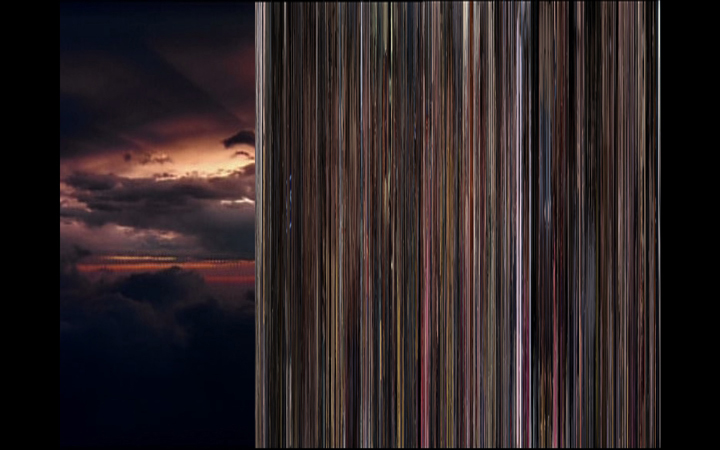
»CocoaGL film stills (Langoliers)« by Tom Smith. CocoaGL is a bespoke computer program designed to break down a film into its constituent frames. If a short film is made up of 100 frames, CocoaGL will split the screen into 100 vertical/horizontal lines or 100 concentric squares. As the film plays the 1st 100th of the 1st frame will be frozen, then the 2nd 100th of the 2nd frame will be frozen and so on until all 100 100ths have been frozen and the entire film turned into a still image.

»Dadameter«, 2002-2008, Global index of the decay of the aura of language, By Christophe Bruno.

»scratch-a-bit«, scratching the output bytes of your laptop’s trackpad “resonated” through hardware and software protocols. By Rodrigo Derteano.

“OGLE: The OpenGLExtractor” by Eyebeam R&D. Example: 3D-printing Google Earth Buildings. “OGLE” is an open source software package by the Eyebeam OpenLab that allows for the capture and re-use of 3D geometry data from 3D graphics applications.

»Serie 1024 x 768« by Johannes Franzen. This is an artist programmed software that makes a new image appear in a five to ten second interval. This means that for every new picture the computer program assigns a color to each of the 1024 times 768 dots. The machine does not proceed linearly, i. e. attribute a different color one by one to the dots on display. Rather, a random generator turns out new colors for all the dots with each new calculation; every time, every theoretically possible image can appear.

Pictures “Windows” and “Halo 2” from the series “Gamers” by Todd Deutsch. See also “Tokyo Arcade Warriors – Shibuya” by Axel Stockburger and “After Microsoft” by Goldin+Senneby.
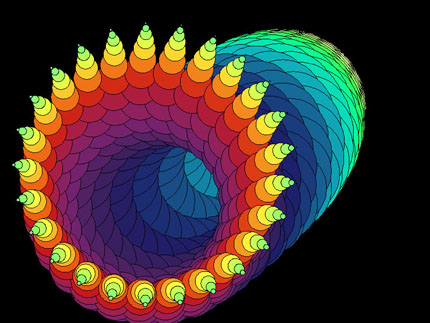
»Seed of Worms« (demos unreleased “trail” feature) is a video made with »Whorld« software. Whorld is a free, open-source visualizer for sacred geometry. By Chris Korda.

Family album images of demonstrations by Church of Euthanasia and Chris Korda.
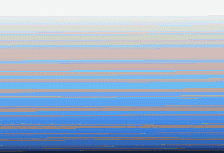
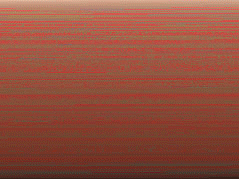
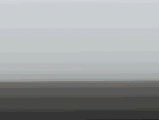
»System Displacement«, 2007 (Pixels rearranged from lightest to darkest) by Oliver Laric.

»Screen Burn (please wait)«, 2005. Steven Read wrote a software program in Apple II Integer Basic that displays an image on the monitor’s screen. Then he ran the program continuously for about 6 months. The software image was eventually burned into the screen because the internal phosphor compounds which emit light lost their luminosity and left behind a ghostly trace. The ‘please wait’ text is actually an image which took over 1000 lines of software code to create. The old Apple II operating systems (DOS 3.x, ProDOS, etc.) did not come with any font facilities, if you wanted a font you had to code it from scratch.

»Logo.Hallucination« continuously monitors the images circulating on the Internet looking for hidden logos. It’s software is based on neural network image recognition. Pattern recognition is a field in full expansion, it constitutes a key technology in the domains of safety, of the management of the rights, of marketing… »Logo.Hallucination« proposes to use technologies of recognition of images in order to detect subliminal forms of logos or emblems, hidden (generally involuntarily) in the visual environment or in the whole of the images of the Internet. Every time a hallucination is detected, an email is sent to the owner of the image. By Christophe Bruno.

»Attributing Value (Refractions)« is an ongoing video series documenting various artist’s works. The works are environmentalized and refracted through the structural data of artist Damon Zucconi himself. Sofar completed are Bruce Nauman: 100 Live, 100 Die; Carsten Nicolai: Syn_Chron; Pierre Huyghe: L’Expedition scintillante; Richard Serra: Torqued Ellipse VI; 0100101110101101.org: jodi.org “%20Transfer”.

»Zenith Alignments«. Using star tracking software, minor zenith alignments with celestial bodies were found to occur at multiple intervals throughout the course of the day over various locations. These precise locations were located via GPS. 3-point areas were located at sites of the zenith alignments. These areas were highlighted and clearings were made to coincide with the alignments. So at the moment of the alignment Damon Zucconi would be exposing the ground and aligning himself with the line that extends to the star. These specific alignments were unique to these specific locations, occurring once an annual cycle. This could largely be seen as the process of integrating himself with 90 degree angles, in turn, demarcating larger phenomenological alignments and relations: “the body mapped onto the land onto the heavens above.”

»’At’ Asserting its Object Status«. Found sculpture.

»2d Orthogonal Line Drawing«. Drawing with laser and mirrors. All projects by Damon Zucconi.